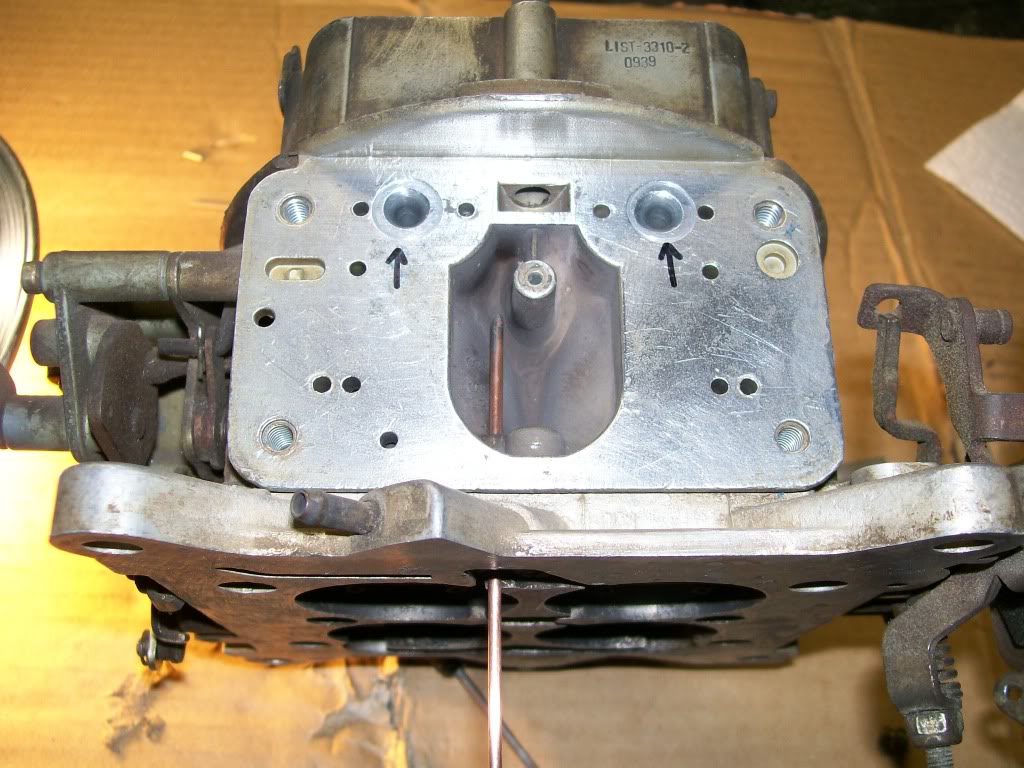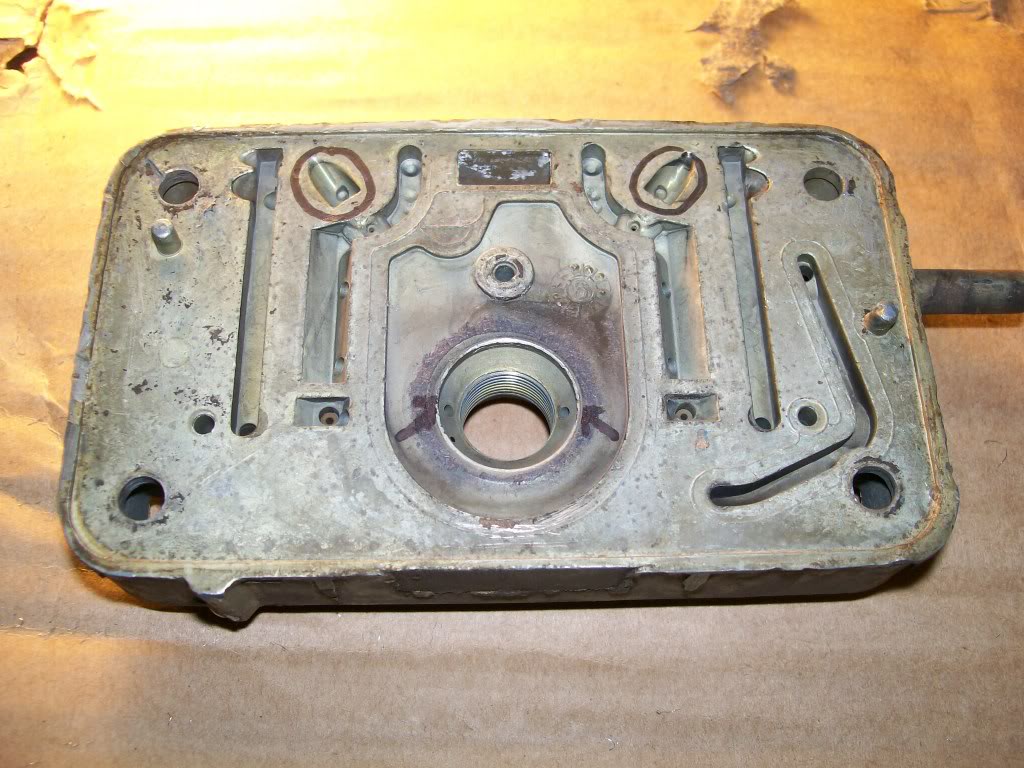You must be logged in to rate content!
5 minute(s) of a 620 minute read
3-6-2012
Now that we have a visual idea of the power valve, of which most illustrations will do, let's see if we can understand this power valve.
In the Holley carb like this one, there are 3 or 4 fuel circuits. They all have to work in harmony and at just the right time to create a power band without hesitation from idle to wide open throttle.
The vehicle, at idle, is pulling fuel through very small slots right where the trottle plates almost touch the throttle bore. As we covered already, the accelerator pump gives us a shot of fuel so we can transfer from the idle to open throttle happens. Now is when we need the power valve. Once the accelerator pump shot runs out, the main jets still need a helper since the throttle plates are open and the vehicle is accelerating.
This is where the power valve comes in, it fills a void between the accelerator pump and normal driving.
By the previous post, take a look at the center one. The end with the spring is where the gas enters the valve. Looking closer inside the spring you can see a tapered end, this male taper fits a female taper, thous creating a shut off valve.
Since there is no vacuum draw on the other end of the valve and the valve is open in this picture, we can assume that gas flows through this valve when there is little or no vacuum.
I mention the vacuum idea, vacuum is once again used to open and close something to work with the fuel flow. Looking at the valve at the right, you can see yet another rubber diaphram behind the metal shield.
Here's the lowdown, the spring/valve side is in the float bowl resting in gas. The other side is in a chamber that is constantly at the same vacuum as the intake manifold.
In a situation where you've got the throttle open, and the engine is trying to catch up with your demand of picking up speed, there is less vacuum in the intake manifold. This lesser vacuum in the intake, is represented in the chamber where the power valve sits. Once the vacuum becomes low enough, the spring on the power valve now overtakes the vacuum and begins to open the power valve and gas now enters the power valve. This extra gas mixes with and travels with the gas already flowing from the main jets. The two mixed together enters the intake manifold as a richer mixture.
Once the engine catches up with the demand, the vacuum in the power valve vacuum chamber raises and pulls against the power valve spring to close the power valve. Now the vehicle runs on the main jets again, til the next time you open the throttle, then the whole thing starts again.
Vacuum, and you thought it was just for the carpet.

Here is the chamber that the vacuum side sits in. I put a piece of welding rod through the hole so you can see how the vacuum of the intake manifold gets to work the power valve.

This next picture is to show the path the gas follows from the float bowl then through the power valve.
With no power valve in place, you can see two small holes inside the larger hole where the power valve fits.
The gas goes in the tapered end of the power valve, goes through the threaded part of the power valve. then before it gets to the rubber diaghram, it exits the two slots between the threads and the rubber diaphram bulge.
The gas leaves the power valve and enters the two small holes. Then travels upward, mixing with the gas from the main jets. The gas then exits the metering block where I circled the two spots on the metering block.
Now going back to the upper picture showing the main carb body, I marked two holes with arrows. These are where the fuel enters from the metering block and heads to the airstream then down the intake manifold.
Did someone ask about adjustablity???? Oh yeah, These power valves have a wide range of choices. The main question is, what is the vacuum that your engine idles at. You obviously don't want the power valve opening at idle or too close to just off idle. So the power valve's spring can not override the vacuum supply at idle.
There are also times where you may lug the engine and the intake manifold vaccum will drop also. Once again, the vacuum has to remain strong enough the over ride the spring tension also, or there could be a rich mixture at the wrong time.
One more situation, an engine with a big long duration cam. These have terrible vacuum at idle, so the valve will have a lower vacuum rating before the spring can open the valve.
I'm gonna stop here. Scooter402 is aching to join in on the conversation. I freely give him his input. Getting someone else's point of view is good to expand the situations we all might get into someday.
Scooter402, if you want, lets talk about the metering block also, it's about time to show the secondary's metering block and the metering plate they use some times also.
Comments

Great before & after!
Posted by Diggymart on 1/11/20 @ 4:10:28 PM

Gotta love the Willys! Good job...great build!
Posted by Diggymart on 12/10/18 @ 8:34:21 PM

Ultimate classic truck right there
Posted by CCmyVW on 12/26/20 @ 4:17:42 PM